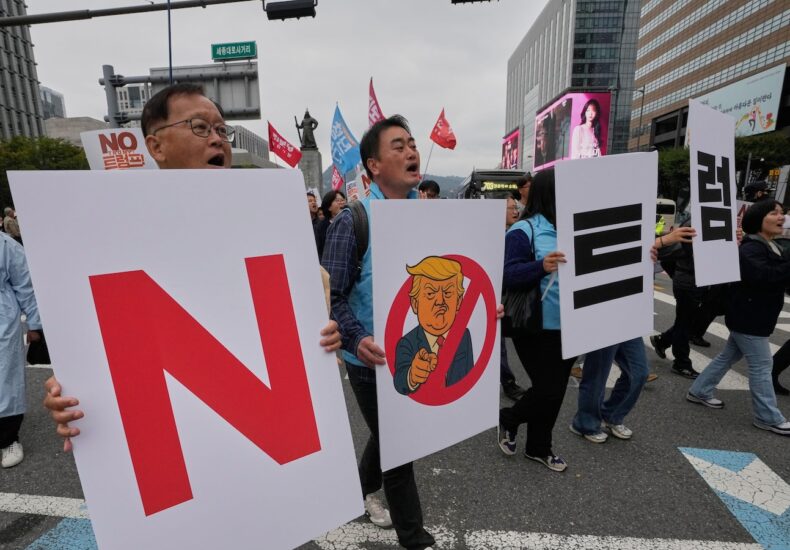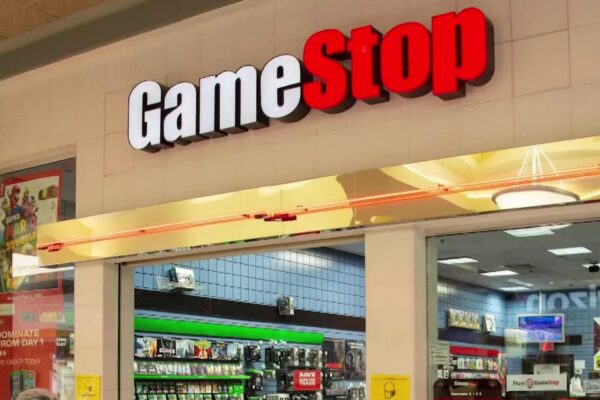
In Japan and South Korea, Trump will promote big investments
WASHINGTON — President Donald Trump is set to visit Japan and South Korea next week to promote a massive financial commitment of at least $900 billion in investments. These funds are intended for U.S. factories, a natural gas pipeline, and other projects.
In August, Japan and South Korea made these financial pledges to encourage Trump to reduce his planned tariff rates from 25% to 15%. However, as the president prepares to depart Friday night for Asia, these commitments remain more of a loose end than actual secured funds for American industry.
Japan pledged $550 billion in investments but stipulated that the money should primarily benefit its own companies. This condition was outlined in a memorandum released in September. Adding to the uncertainty, Japan appointed a new prime minister, Sanae Takaichi, on Monday. While she has expressed respect for Trump, she is leading an untested coalition government.
South Korea offered $350 billion but requested a swap line for U.S. dollars to facilitate its investments, seeking to fund the transactions through loan guarantees. Without these measures, the commitment could jeopardize South Korea’s economy.
The investment arrangements are unusual within the context of trade frameworks. Trump insists he will personally oversee how the money is spent, allowing him to choose winners and losers. Despite weeks of negotiations, no breakthroughs have been made regarding how the investments will proceed, even though both nations are keen to maintain their alliances with the United States.
Ahead of his trip, Trump expressed optimism that his tariffs have compelled investments that will fuel what he predicts to be an economic boom starting next year.
“We’ve done well, as you know, with Japan, with South Korea,” Trump told Republican senators on Tuesday. “Without the tariffs, you could have never made the deal. I’ll tell you what. Tariffs equal national security.”
For Trump, these investments also serve to demonstrate America’s strength ahead of a planned meeting with Chinese leader Xi Jinping during his visit to South Korea. U.S. Trade Representative Jamieson Greer described Trump’s strategy as “encouraging allied investment in America’s industrial future” to counter Chinese manufacturers.
However, Japan and South Korea are also competing with China, which is aggressively pivoting into electric vehicles, computer chips, and other technologies. Christopher Smart, managing partner at the Arbroath Group, a geopolitical strategy firm, warns that mandating investment in the U.S. could weaken allies geographically closer to China.
“They need to invest in their own countries,” Smart said. He further cautioned that Trump’s approach of extracting investment money while erecting “tariff walls” making it harder for allies to sell goods in America presents a lopsided view of how alliances function.
Few experts agree with the Trump administration’s framing of Japanese and South Korean investments as a method to compete against China.
“It is really about lowering tariffs and avoiding Trump’s wrath,” said Andrew Yeo, senior fellow at the Brookings Institution’s Center for Asia Policy Studies.
There is an expectation that Japan and South Korea want to overcome hurdles related to investments and will seek “progress” in talks with Trump, according to William Chou, a senior fellow focused on Japan at the Hudson Institute, a conservative think tank.
Chou pointed to Nippon Steel’s agreement to purchase U.S. Steel this year as an example of effective cooperation with the Trump administration. Trump initially opposed the merger but later supported it after securing an agreement giving the U.S. government some control over the acquired company.
Similarly, the memorandum of understanding on Japan’s $550 billion investment includes provisions granting the U.S. government input on fund allocation. A committee led by Commerce Secretary Howard Lutnick proposes investments, with Japan having 45 days to respond. The deals would favor Japanese contractors and suppliers.
“Japan came through with the paperwork,” Lutnick said in a September CNBC interview. “They gave us $550 billion to invest for the benefit of America, build the Alaska pipeline, build nuclear power plants, make your grid better, do generic antibiotics in America.”
South Korea has yet to finalize a written agreement with the U.S. on its $350 billion investment, which remains problematic as higher U.S. tariffs still apply to South Korean autos.
South Korean officials have resisted U.S. demands for upfront payments, citing risks of triggering a financial crisis. Instead, they have proposed delivering the investment through loans and loan guarantees.
After recent talks in Washington, Kim Yong-beom, presidential chief of staff for policy in South Korea, told reporters that progress had been made but withheld specifics.
“We’re nearing an agreement that there should be mutually beneficial (deals) that the Republic of Korea can endure,” Kim said. “The U.S. fully recognizes and understands possible shocks on the foreign exchange market in the Republic of Korea.”
The proposed South Korean investment represents more than 80% of its foreign currency reserves. To ease potential financial instability, South Korea has proposed a currency swap with the U.S., but no agreement has been reached yet.
Tensions between the two countries have also been strained by a September 4 immigration raid by Trump’s administration on a Hyundai auto plant in Georgia, resulting in the detention of over 300 South Koreans. This occurred less than two weeks after Trump met South Korean President Lee Jae Myung, sparking calls in South Korea to ensure legal protections for workers operating in the U.S.
Since the raid, South Korea’s Foreign Ministry announced that the United States agreed to admit South Korean workers on short-term visas or via a visa waiver program to support industrial projects in America. President Lee indicated that South Korean companies might hesitate to invest further in the U.S. unless visa policies improve.
“When you build a factory or install equipment at a factory, you need technicians, but the United States doesn’t have that workforce and yet they won’t issue visas to let our people stay and do the work,” Lee said last month.
Trump maintains that his tariffs will spur new investments leading to job creation for U.S. citizens.
“Without tariffs, it’s a slog for this country, a big slog,” Trump said Wednesday.
___
Kim reported from Seoul.
https://abcnews.go.com/US/wireStory/japan-south-korea-trump-promote-big-investments-details-126819037
You may also like
延伸阅读
You may be interested
Congress Leader Rahul Gandhi Says He’s ‘Getting Help From Inside ECI’ To Expose Alleged Vote Fraud – Video
New Delhi: Congress leader Rahul Gandhi has alleged that he...
‘Dabangg’ director labels Salman ‘criminal’; says actor had ‘unflattering image’
**‘Dabangg’ Director Labels Salman Khan a ‘Criminal’; Reveals Actor Had...
GST 2.0: Maruti cars become cheaper by up to ₹1.3L
**GST 2.0: Maruti Cars Become Cheaper by Up to ₹1.3...
 The New York Times
The New York Times
- CVS Worker Fatally Stabbed on Christmas Day on Long Island 2025 年 12 月 26 日 Jenny Gross and Michael Levenson
- Downpours Ease in Southern California, but Flood Risks Remain 2025 年 12 月 26 日 Jacey Fortin and Dan Watson
- Michal Urbaniak, Pioneering Jazz Fusion Violinist, Dies at 82 2025 年 12 月 26 日 Alex Williams
- Trump’s Claims About Nigeria Strike Belie a Complex Situation on the Ground 2025 年 12 月 26 日 Ruth Maclean, Saikou Jammeh and Ismail Auwal
- 8 Killed in Syria Mosque Blast, Government Says 2025 年 12 月 26 日 Abdi Latif Dahir and Hussam Hammoud
- New York City Braces for Heavy Snow as Winter Storm Approaches 2025 年 12 月 26 日 Eliza Shapiro
- 2 Killed in Vehicle Ramming and Stabbing in Israel, Officials Say 2025 年 12 月 26 日 Adam Rasgon and Johnatan Reiss
- What to Know About U.S. Military Action in Nigeria 2025 年 12 月 26 日 The New York Times
- Sick of Trump News? I’m Here for You. 2025 年 12 月 26 日 David Brooks
- Trump Is Getting Weaker, and the Resistance Is Getting Stronger 2025 年 12 月 26 日 Michelle Goldberg



Leave a Reply